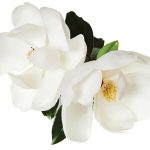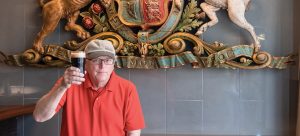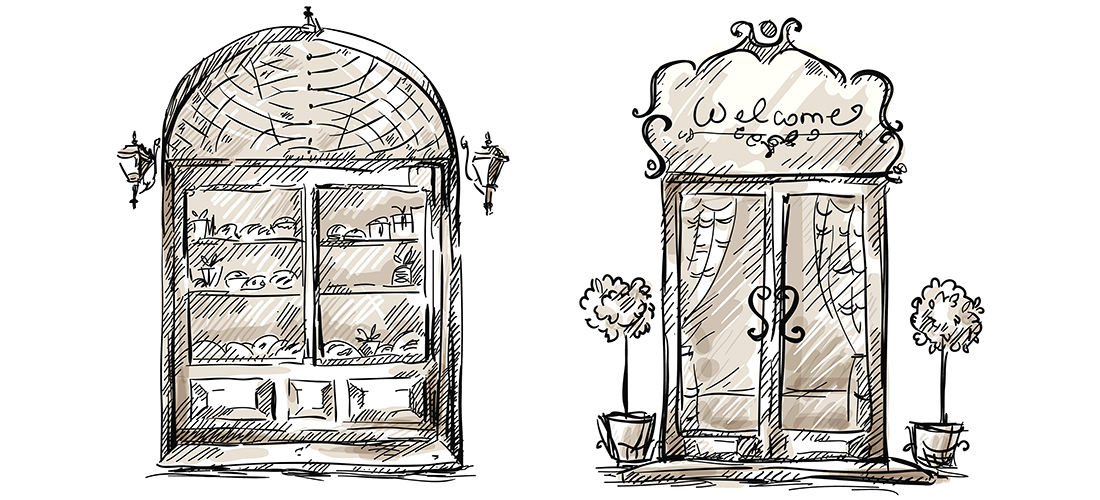
Tales from our most beloved shopping center
By Billy Ingram
My mother told me a story once about how she and a childhood friend rode their bikes into the woods west of her family’s home on West Greenway in Sunset Hills. This was back in the 1930s when Sunset Hills still had woods. She and her friend managed to get hopelessly lost in that forest before finally coming across a single cabin where a nice old hermit directed them back to civilization. That patch of woods, located well outside city limits, was to one day become the site of Friendly Center.
Friendly Shopping Center was a major part of my young life in the 1960s and ’70s — the lollipop tree at Ellis-Stone excited me as a toddler. In later years I was buying film and having pictures developed at Carolina Camera, along with shopping for art supplies and books from Wills. How well I remember inhaling those fluffy Sweet Shop cupcakes, playing endless Captain Fantastic pinball games at Brunswick Lanes and wolfing down Woolworth’s banana splits, where customers popped a balloon to determine its cost, as little as a penny (I was never so lucky — full price every time).
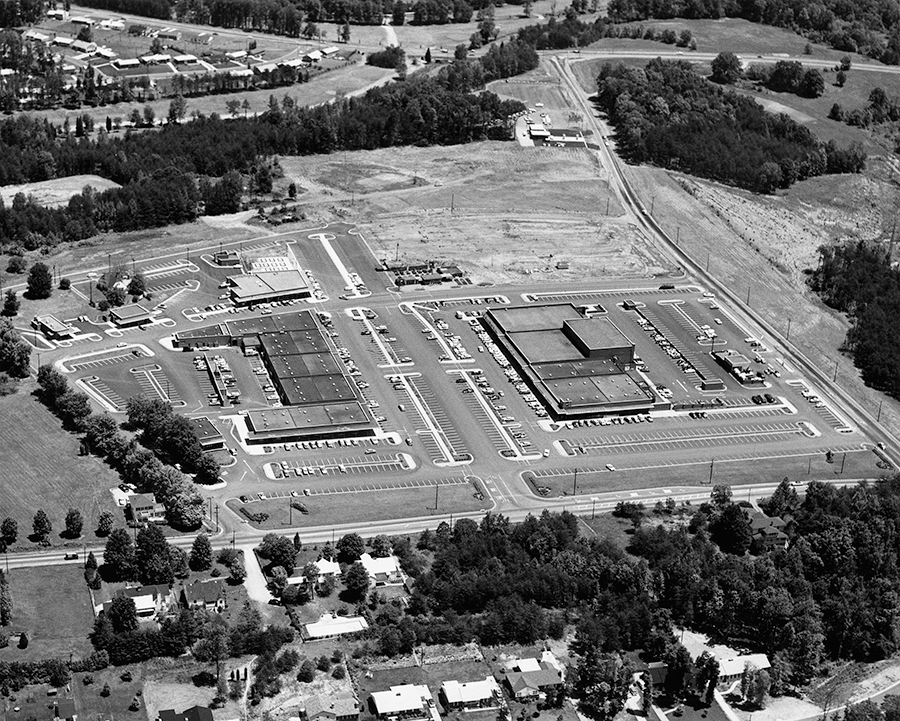
My Aunt Gertrude would only grocery shop at the Friendly Winn-Dixie — they were “The Beef People” after all. Our finer clothing came from Bernard Shepherd, where you’d merely sign a receipt. Your credit-worthiness was assumed, a bill would arrive in the mail. A trip to Friendly Center was de rigueur during the holidays, if only to drive past the mechanical waving Santa and sample free snacks at Hickory Farms, a permanent fixture in those days.
There was a hometown feeling to Friendly Shopping Center. With its open-air plan and proximity to postwar neighborhoods such as Starmount and Guilford Hills, it became a town square for what counted as the suburbs in those days. Moms could mail letters, meet friends for lunch, check out the latest fashions, and do the grocery shopping all in one stop. Dads could pick up dry-cleaned suits and starched shirts at Blue Bird Cleaners (conveniently located next to the ABC store). Kids could walk or ride their bikes to browse the trains and model kits at the toy store — or in the case of one 12-year-old, would-be golf writer and O.Henry editor, try to purchase a Playboy magazine at Eckerd Drug.
Contributing to the village-y vibe was the fact that the majority of the stores were locally owned. Fleet-Plummer before it relocated was your typical hardware concern but they had a big toy selection around the holidays. One Christmas, as Santa was laying out our presents, it was discovered that my sister’s Chatty Cathy doll didn’t possess the gift of gab, so Dad got Mr. Plummer out of bed to meet him at the store and replace it for one that talked.
Friendly Center was a lot smaller when I was a young man, compared to today, but considerably larger than its first incarnation.
While there were established shopping centers in Greensboro by the mid-1950s, most notably Summit, Lawndale and Plaza, none were nearly so ambitious, or what we would call today “upscale,” as Friendly Shopping Center. “Piedmont Carolina’s first and only complete regional shopping center” was designed for “casual shopping,” open Monday through Saturday.
When Friendly Center debuted in 1957, it consisted of two blocks with 12 shops each:
BLOCK A: Guilford National Bank, Pleasants Hardware, Leon’s Beauty Salon, Harllee’s, Inc, Friendly Toy & Hobby Shop, Stanley’s, Inc., Junior Circle Shop, Guy Hill, Carolina Camera Center, Wills Book & Stationery, Laurie’s Sportswear, Venus Slenderizing Salon.
BLOCK B: Mason’s Florist, Jay’s Delicatessen, Harold’s, Eckerd Drug Store, Clippard Barber Shop, Blue Bird Cleaners, F. W. Woolworth Co., Belk, Kirby’s Shoe Store, Guilford Dairy Bar, Colonial Stores, Kyle’s Friendly Service.
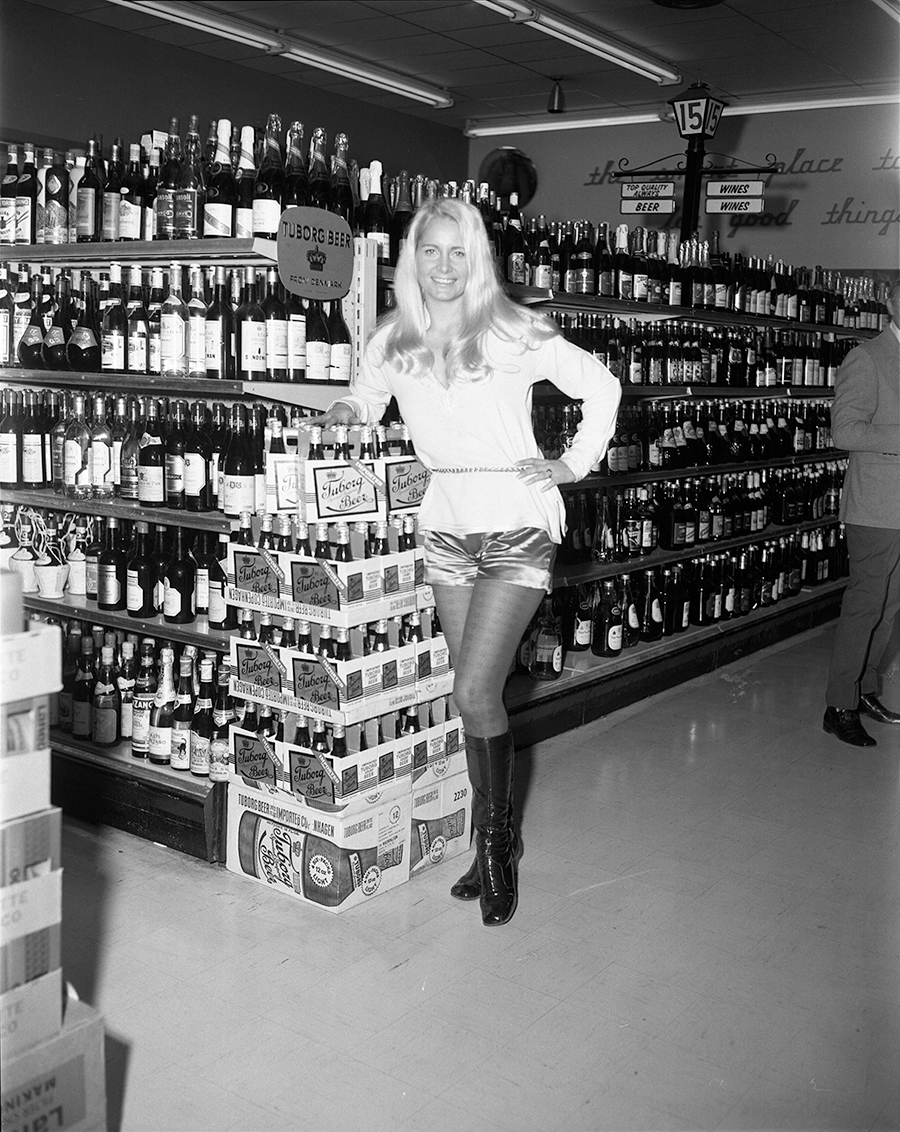
On August 1, 1957, Blanche Sternberger Benjamin, wife of Starmount cofounder Edward Benjamin, cut the ribbon to open Friendly Shopping Center to the public. Within an hour, all 1,300 parking spaces were overflowing; 25,000 shoppers flooded through the doors on that one day, representing one out of four Greensboro residents.
Behind Pleasants Hardware, previously in business for 48 years at 519 S. Elm, Mom could drop off the little ones then browse the aisles in peace while they frolicked in the children’s playground. The main attraction, stretched over a concrete pit, was a mammoth trampoline that youngsters could bounce around on for 25 cents an hour, unsupervised.
Laurie’s was the first local fashion boutique to leave downtown and head west. In business for 13 years before relocating, William and Athena Simon’s store was named for their daughter. Our first Eckerd Drug Store was at Friendly. Wills Book Store had been selling novels and paperbacks for 52 years on Elm, and this was their second location, with as much space devoted to stationery, art supplies and gifts — paperweights, bookmarks, china figurines of Beatrix Potter characters — as books.
At 24,000 square feet, Belk was the most opulent store in the center. Shoppers were greeted by a 12-foot high, 70-foot long mural facing the mezzanine floor depicting the administration building at Woman’s College (UNCG), First Presbyterian Church, and the statute of General Greene at Battleground Park.
This was Belk’s 354th store but considered important enough that John M. Belk, chairman and CEO of the company, along with his top executives, were in attendance for day one. “I worked stocking Belk before they opened in 1957,” Phil Callicutt remarked. “I became famous for not allowing Mr. John Belk in the front door. I told him to ‘Go around to the back door like the rest of the salesmen.’ I was lucky that my career with the company wasn’t hampered.” As a convenience, credit accounts could be carried over from the Belk store downtown.
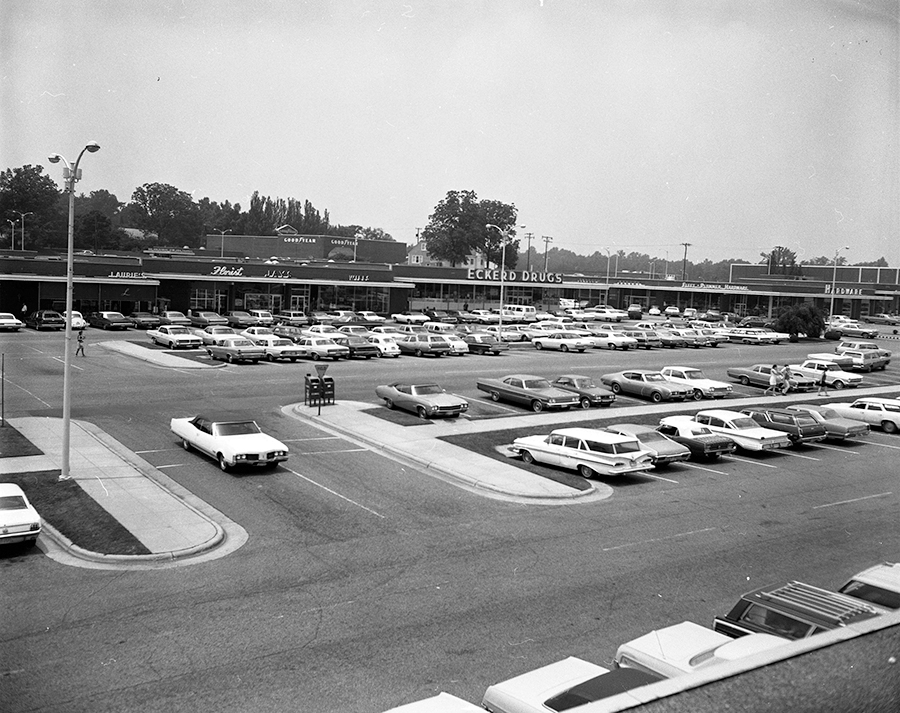
Another elaborate mural, this one of crushed glass, could be found at Harold’s Restaurant. Restaurateur J. Harold Coble boasted his dining room was the most modern in town, interior designed by Ray Teague, a member International Art Association. Diners enjoyed a cosmopolitan ambiance of Philippine Mahogany, brass and crystal chandeliers, 20 contemporary art installations, 30-foot planters shielding the kitchen, and two romantic alcoves papered in Japanese grasscloth, while supping on European cuisine and flaming desserts that the maître d’hôtel adapted from Manhattan’s Roosevelt Hotel.
A considerably more downscale ambiance that included the combined aromas of plastic flowers, grease from the lunch counter and cedar shavings that lined hamster cages greeted shoppers at Friendly’s Woolworth’s. Unlike the downtown branch, it was considered a self-service operation, where you could find cheap toys, sundries, clothespins bandanas, goldfish, comic books and an abundance of poster boards used in many a school project. There won’t be any salesgirls,” the store manager bragged. “Just checkout gals.”
Flush with success, Friendly Center underwent its first expansion in 1959, adding six new units that included Ellis-Stone (which became Thalhimers), a post office, bakery, and the ABC store.
Boy Scouts in the ’60s would regularly encamp on the western edge of the shopping center; one winter morning campers woke up to several inches of unexpected snow atop their tents. Scouts purchased their official gear in Belk, their shoes at Kirby’s. Blissfully unaware of the dangers of radiation, Kirby’s Shoe Store had a fluoroscope under which children could view their feet, allowing them see right through to the bones.
Friendly Center still had room to grow, and grow it did in 1967, a push to the north that added iconic stores like Bernard Shepherd Clothing, Gate City Pharmacy, Friendly Car Wash, Cass Jewelers, Thomas Photo Supply, Harvey West Music Company, Paul Rose Department Store, K&W Cafeteria, Rosenthal’s Bootery, Bocock-Stroud Sporting Goods, Merle Norman Cosmetics, and that eclectic emporium everyone fondly remembers, Potpourri.
Besides the ubiquitous scent of patchouli, Potpourri was known for bizarro merchandise like melted soda bottles repurposed for vases, an endless array of incense, love beads, blacklight posters, pet rocks, mood rings, kitschy tchotchkes galore, in addition to the dozen jars of stick candies positioned at the register, where every purchase was placed in a glossy paper bag topped with the store’s icon, a yellow sun with bright orange rays. At one of their many sidewalk sales, I bought a 2-foot high inflatable plastic Coke bottle that hung from the ceiling of my bedroom.
Potpourri was founded by David Grimes, by all accounts beloved by those who worked for him. Grimes sold a lot of fondue kits, which became all the rage in 1967, before discovering there were no fondue cookbooks. He commissioned his own, and Potpourri Press was born. Production offices were set up behind Krispy Kreme on Mill Street where the outfit published dozens, maybe hundreds, of hippy-dippy booklets with titles like Gardening with Ferns, Lovers Dining and Napkin Folding.
In 1967, Gate City Pharmacy, like Scott Seed two years earlier, closed their downtown digs to relocate to Friendly. The drugstore is still there, but sadly, the customer-friendly garden store, smelling of potting soil and fertilizer, is not.
The center’s 1967 expansion was preceded by the state-of-the-art Terrace Theatre, opening on Christmas Day 1966 showing Walt Disney’s Follow the Boys in Ultra-Vision, on a wall-to-wall screen with 6-track stereophonic surround sound. Another groovy component at the Terrace was the plush rocking chair seating.
My cousin Billy Owens worked at the Terrace Theatre. “It was in 1970, right before I got out of ninth grade,” Billy tells me. “I was making 85 cents an hour. Now, that was just an usher job, if you were head usher, $1.15.” Membership had its privileges: Employees of the Terrace could show their pay stubs to get free admission at the Janus Theatres, the city’s first multiplex just beyond the Plaza Shopping Center at Battleground and Northwood, and the Carolina downtown.
Billy says he almost died at the Terrace — twice. “We would do kiddie matinees on Saturday morning,” he recalls. “We had an old PA system with those old metal microphones so we didn’t have much of a way to get music through it.” These events were hosted by WFMY’s George Perry (The Old Rebel). “We had this old turntable with a metal arm,” Billy says. “So I turned it on and grabbed both of those metal things at once and it zapped me and knocked me down.” When he came to, “There was The Old Rebel’s face above mine saying, ‘You OK?’ I went, ‘Yeah.’ And then I did it again!”
The next movie attraction would show up on a Sunday morning. “Big canisters that were set right out front and nobody would steal them,” Billy says. “They would book the films for a month and then, two weeks in, they’d say, ‘Held over for a third week’ then ‘Held over for a fourth week.’” A second auditorium was added on in 1974.
When asked what his favorite place at Friendly was back in the day, Cousin Billy doesn’t hesitate. “I loved Jay’s Deli, that was a lot of fun, they had great food.” He was especially fond of the Lolly Burger, “I asked them, ‘What’s in the Lolly Burger?’ They said, “Everything that’s left over.’” Jay’s would actually take cold cuts, grind them up, make patties, then fry them like a hamburger.
Besides Belk, Jay’s Deli is the only original Friendly establishment still present. But in name only, having changed ownership and menu decades ago. “Jay’s Deli was started by Sol Jacobs, who was my uncle, and Morry Jacobs, my dad,” Rick Jacobs tells me. “It was a deli and a gourmet foods store also with everything from escargot to fine cookies and meats and cheeses to go.” Rick worked there in 1970, “You had to be 18 to work in a place that served alcohol, so whenever my cousins turned 18 they went to work for Jay’s.”
Most of the sandwiches at Jay’s were named after other shops at Friendly, for instance the Mason (Mason’s Florist) was rare roast beef, slaw and Russian dressing. “The lunch rush was monumental, it was pandemonium, controlled chaos,” Rick remembers. “There was a lady named Gertrude who worked there for years and she kept it going. After the lunch rush, my first day working there, I saw Sol make himself a sandwich and get a cold beer out of the cooler and sit down. He looked up to me and said, ‘When you turn 60, you’re entitled to a beer break.’”
Jay’s most popular creation was the Atomic Submarine Sandwich, keeping a stack of them prewrapped by the register. “The customers were a big cross section, the best selling beer by far was Blatz,” Rick recalls. “One time I got upset with a lady and I mouthed off to her a little and she went to complain to Sol. He told me to go into the kitchen and stay there and I thought he was going to come in there and rip me a new one but he smiled and said, ‘This is why I own my own business, so I can do what you just did.’”
Described as a ‘radical guy,’ Sol Jacobs was very politically active, running for mayor twice against Jim Melvin in the 1970s. “All the stores leased space from Mr. Benjamin,” Rick remembers. Part of the lease agreement stated that, once a year or so, Edward Benjamin could dictate to business owners what he wanted to see displayed in their storefront window. “He wanted to do a promotion for U.S. Savings Bonds at Jay’s one month,” Rick says. “Mr. Benjamin came in with a big Savings Bond with American flags and had it all dressed up but Sol was dead set against the Vietnam War from day one and so was my father. Sol did everything Benjamin required him do but in the corner of that window he added his own sign that said something to the effect of, ‘Any money invested in Savings Bonds should be designated for troop withdrawal only.’”
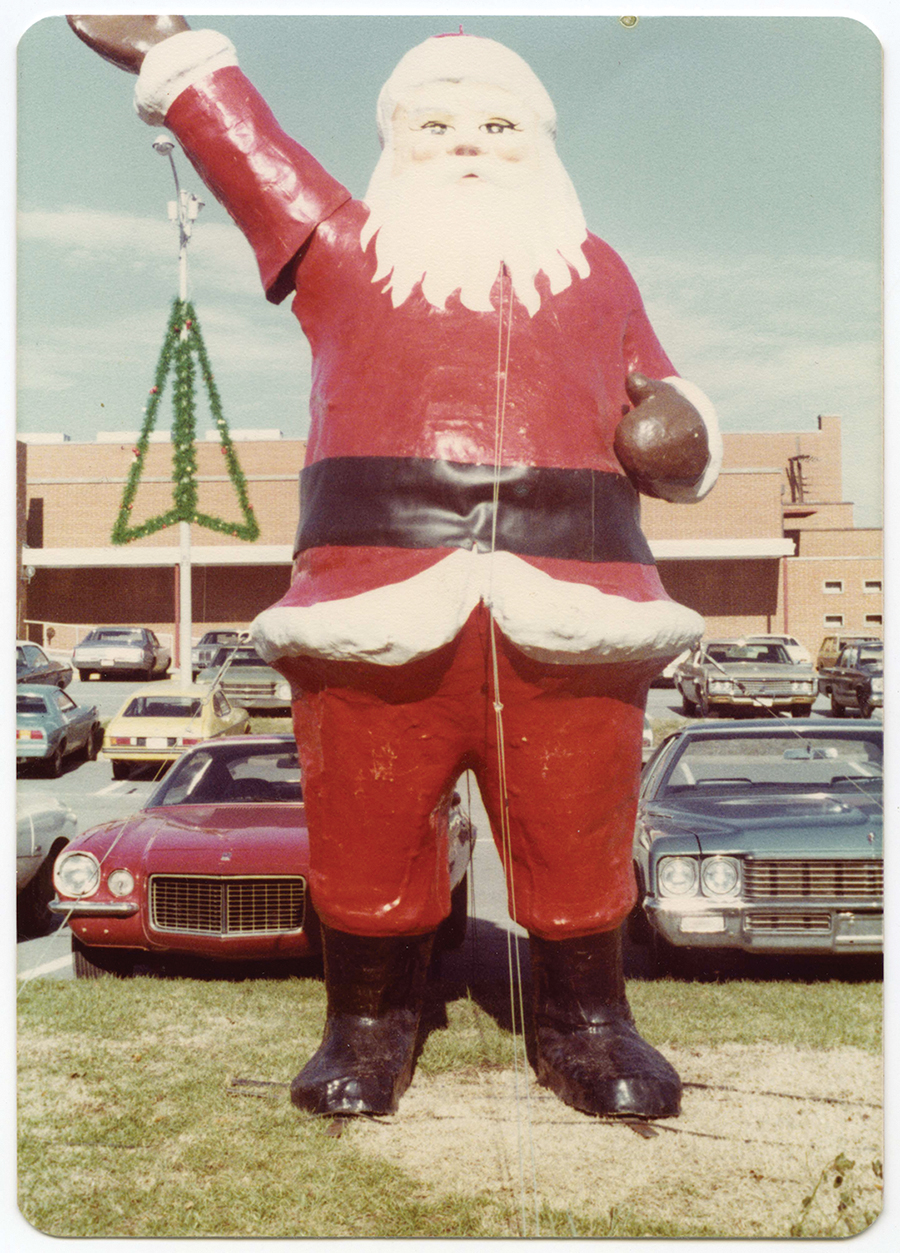
In 1969, Potpourri was joined on that block by two additional shops owned by David Grimes, Greetings Galore and Reed Runners. “I loved working for Dave Grimes,” says Teresa Moore, an employee of Reed Runners for eight years beginning in 1970. “He was like an older hipster. David came back from California with the idea for the shops.”
Reed Runners carried rattan furniture, candles, woven baskets, everything to make your apartment look like Mary Tyler Moore’s. “We had those hanging basket chairs, we sold a lot of those, also hammocks and wicker furniture,” Teresa notes. “There was nothing in the store that anybody needed but it was stuff you couldn’t find anywhere else.”
Teresa has fond memories of those days, “David Grimes was an awesome employer, he cared about his people. I think we made a little bit more than other people in terms of wages so everybody that worked there stayed for a long time because we enjoyed it.” On Saturdays David provided lunch in Potpourri’s back room for all his employees. The only unpleasant aspect according to Teresa, “We had a talking myna bird that could say ‘Hello,’ ‘How are you?,’ and ‘What’s up?’ Cleaning the cage every morning came with the job.”
Behind that row of shops was The Trophy Room tavern (where Newk’s is today), notorious for bartenders allowing underage drinking, despite the legal drinking age being 18. Decked out in manly-man décor, its walls lined with sporting awards, and an enormous aquarium separating the hunting- and fishing-themed sides, the place attracted the likes of Ron Muir, who played left wing for the city’s minor league hockey team, the Greensboro Generals. Within a few short years, The Trophy Room moved to Spring Garden near the UNCG campus where, at night, the watering hole became a disco.
By 1971, the center had grown to 65 stores, including Schiffman’s, opening a second store at Friendly. “No, there has never been a mention of closing our downtown location as it has always served as the headquarters for our organization,” Lane Schiffman informs me. “We believe both locations have been staples for us and the community since 1893 and we continue to see growth as Greensboro continues to thrive.” Situating the newer branch between Starmount and Irving Park made sense as Lane Schiffman points out: “Our father was looking to serve customers in their own backyards and had the foresight to see that Friendly Center was where Greensboro was moving. His ultimate aim was to make Schiffman’s more accessible to everyone.”
Friendly Center, coupled with the Four Seasons Mall, led to the demise of the center city as a prime retail destination, the only major player remaining after the 1970s was the original Schiffman’s.
In 1976, Friendly Center launched Forum VI, an upscale mall on the corner of Northline and Pembroke anchored on the first level by a larger K&W Cafeteria. My mom loved Forum VI, with two floors for shopping and fine dining that included Montaldo’s, Urban Artifacts, The Nicholas (later Robert’s) restaurant and Kabuto. The mall concept fizzled, empty parking spaces could usually be found right beside the front door. K&W survived however, one of the few places you can dine that looks the same as it did 40-plus years ago.
As the 1980s came to a close, Starmount announced plans to enclose Friendly Shopping Center, transforming it into an indoor mall to better compete with Four Seasons across town. For almost two years they proceeded with plans that envisioned leveling most of the stores in order to put shops where the parking was and parking where the shops were. Fortunately, they thought better of the idea. Instead, a $2 million makeover took place in 1992.
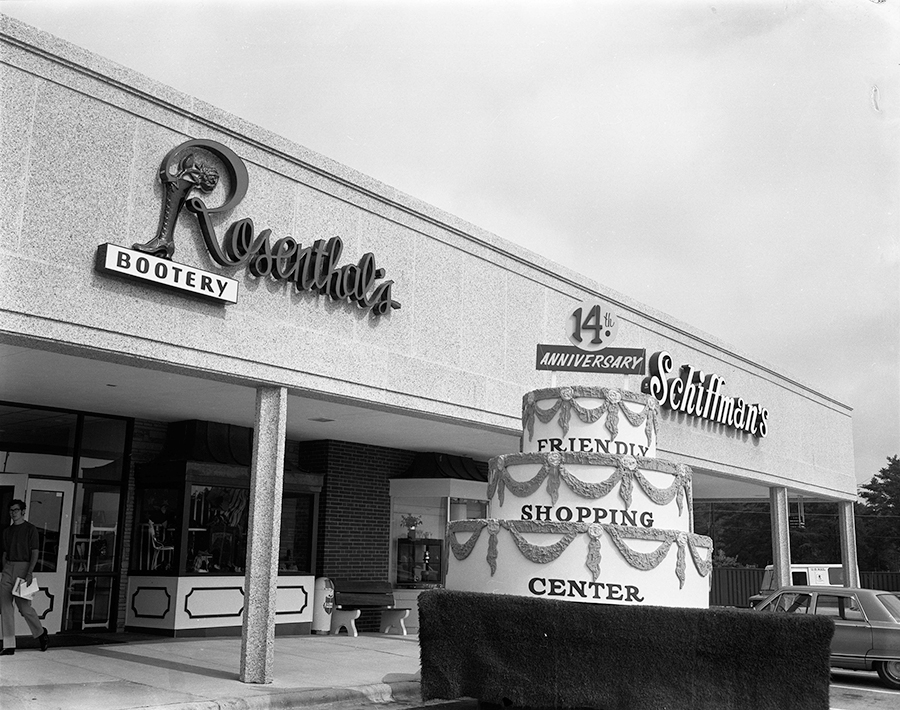
In 2006, a year after a new concept The Shops at Friendly was established, where the iconic pink glass-and-steel box housing Burlington Industries’ headquarters once stood, Starmount sold the entire complex for more than $200 million. That’s a lot of love beads and mood rings.
On December 6, 2016, I was one of about 100 people who attended the opening of a Time Capsule, buried 50 years earlier to the day alongside the Terrace Theatre. Unfortunately, the container had been breached, everything inside immersed in red clay mud. It wasn’t clear what exactly was inside.
A fitting metaphor, you may say. The past is, well, buried.
And one day, the hip and trendy national chain shops that seem so fashionable and of-the-minute will fade into memory like beloved institutions such as Potpourri and Carolina Camera. But, really, can you imagine heading west on Friendly Avenue and not seeing Santa waving at you? OH
Billy Ingram is currently writing a book about his career as a movie poster designer for the major Hollywood studios in the 1980s and ’90s.
Got any fond Friendly memories? Please feel free to share them at facebook.com/ohenrymagazine.


